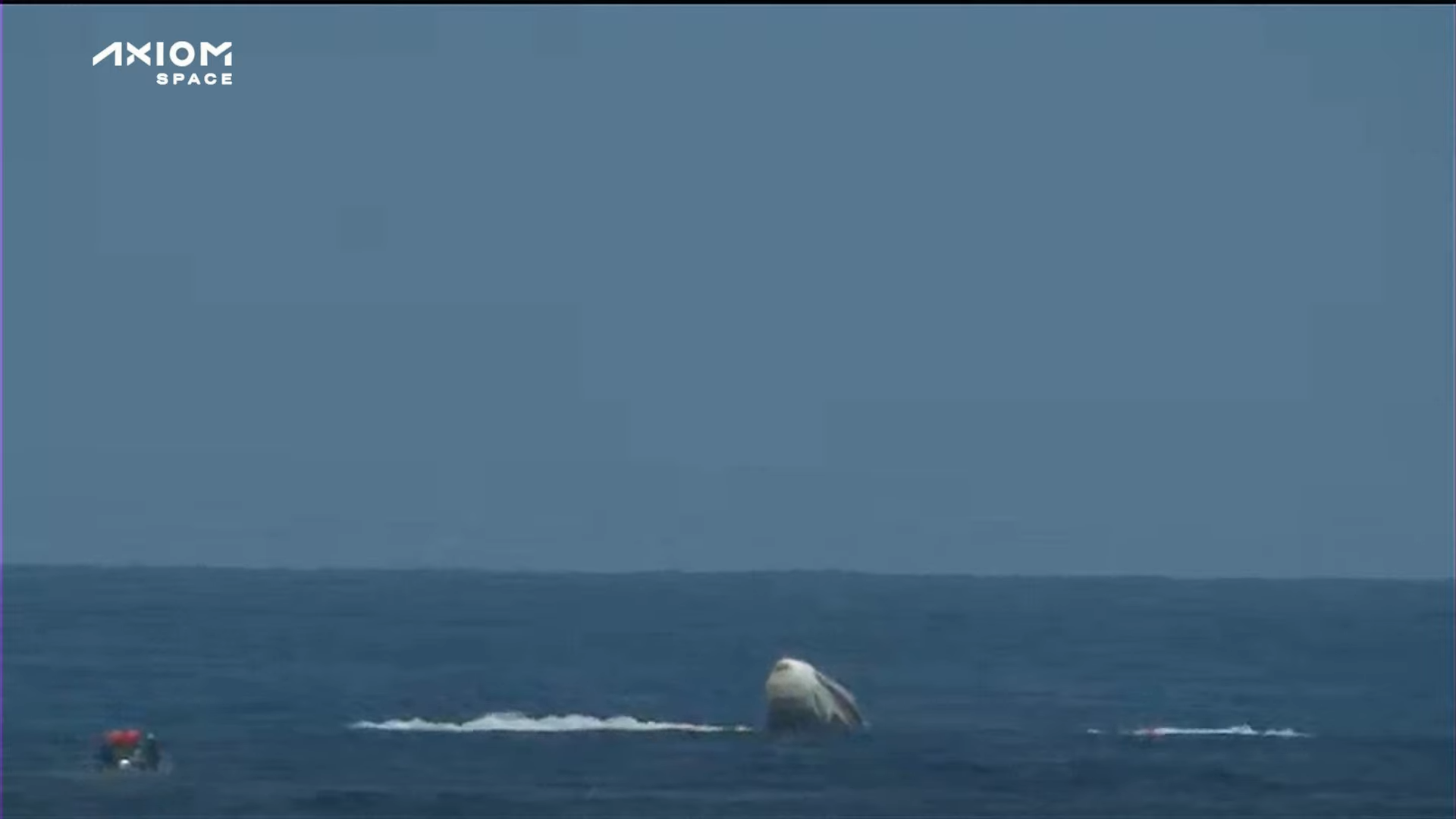
SpaceX’s Dragon Endeavour executed a smooth, parachute-assisted splashdown off the Florida Coast, near Jacksonville, at 1:06 p.m. EDT Monday, wrapping up 17 days in space and the first all-private crewed voyage to the International Space Station (ISS). Flown on behalf of Houston, Texas-based AxiomSpace, Inc., the Ax-1 mission saw Commander Mike Lopez-Alegria—a former NASA astronaut, veteran ISS resident and America’s most seasoned spacewalker—and his crew of entrepreneurs and philanthropists Larry Connor of the United States, Eytan Stibbe of Israel and Mark Pathy of Canada support around 25 scientific, educational and outreach experiments aboard the sprawling orbital outpost. Ax-1 marks the first of at least three all-private missions to the ISS through 2023, as AxiomSpace works to send the first of a suite of research, habitation and manufacturing modules to the station by late 2024.
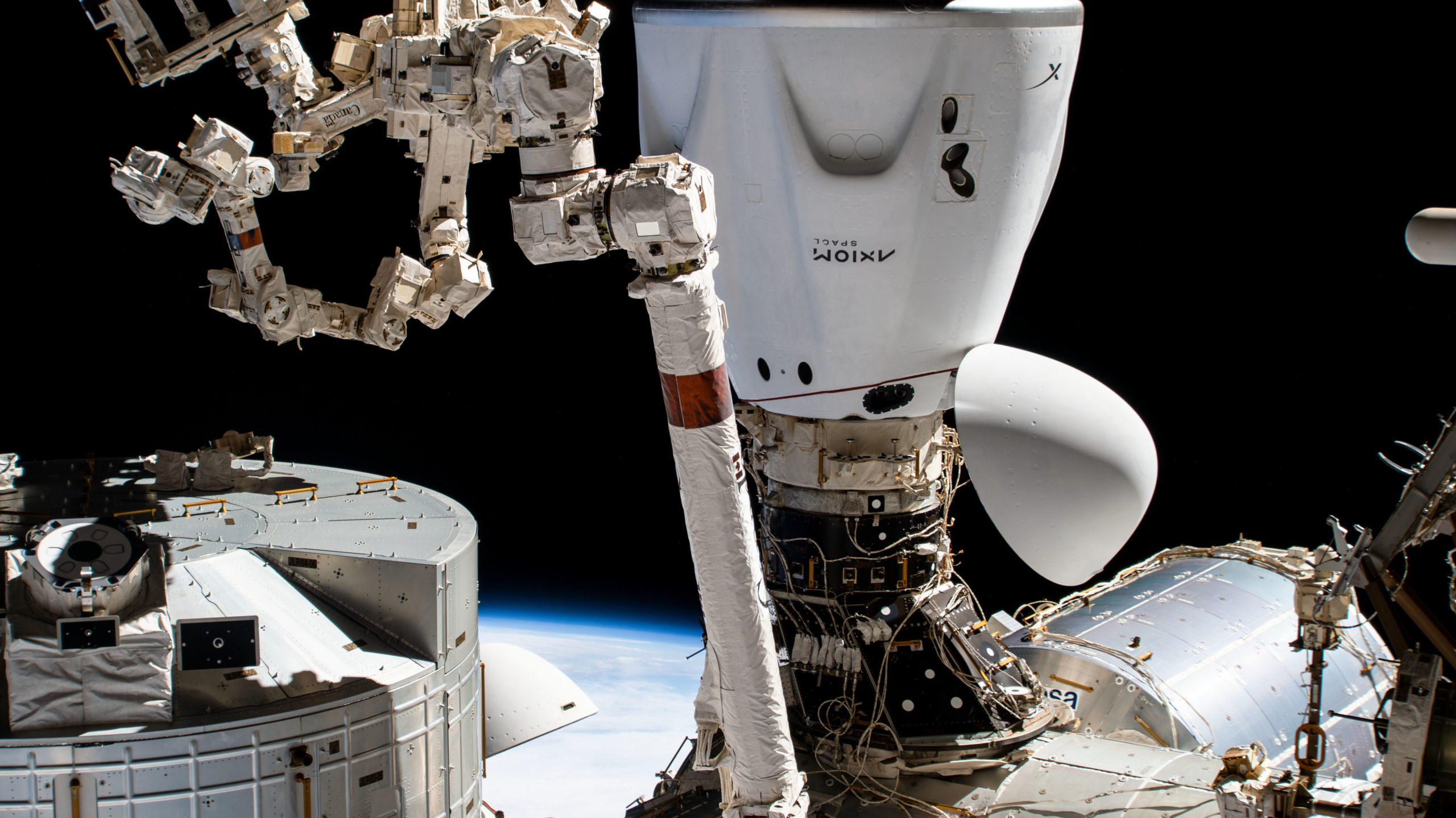
After having been assigned to Ax-1 back in January 2021, Lopez-Alegria, Connor, Stibbe and Pathy originally targeted a February 2022 launch, which was pushed back to late March and ultimately the second week of April in response to efforts to ready Dragon Endeavour for her third orbital flight.
This particular Crew Dragon has a chequered past, having lifted NASA astronauts Doug Hurley and Bob Behnken to the ISS in May 2020 on the historic 64-day Demo-2 mission and more recently last year’s 199-day Crew-2 mission, which currently stands as the longest single spaceflight by a U.S. crewed vehicle. And though Ax-1 turned out to be Endeavour’s shortest flight to date—wrapping up at 17 days, one hour and 50 minutes from launch to splashdown—its all-private nature certainly tacked a new dimension onto the ship’s history-making credentials.
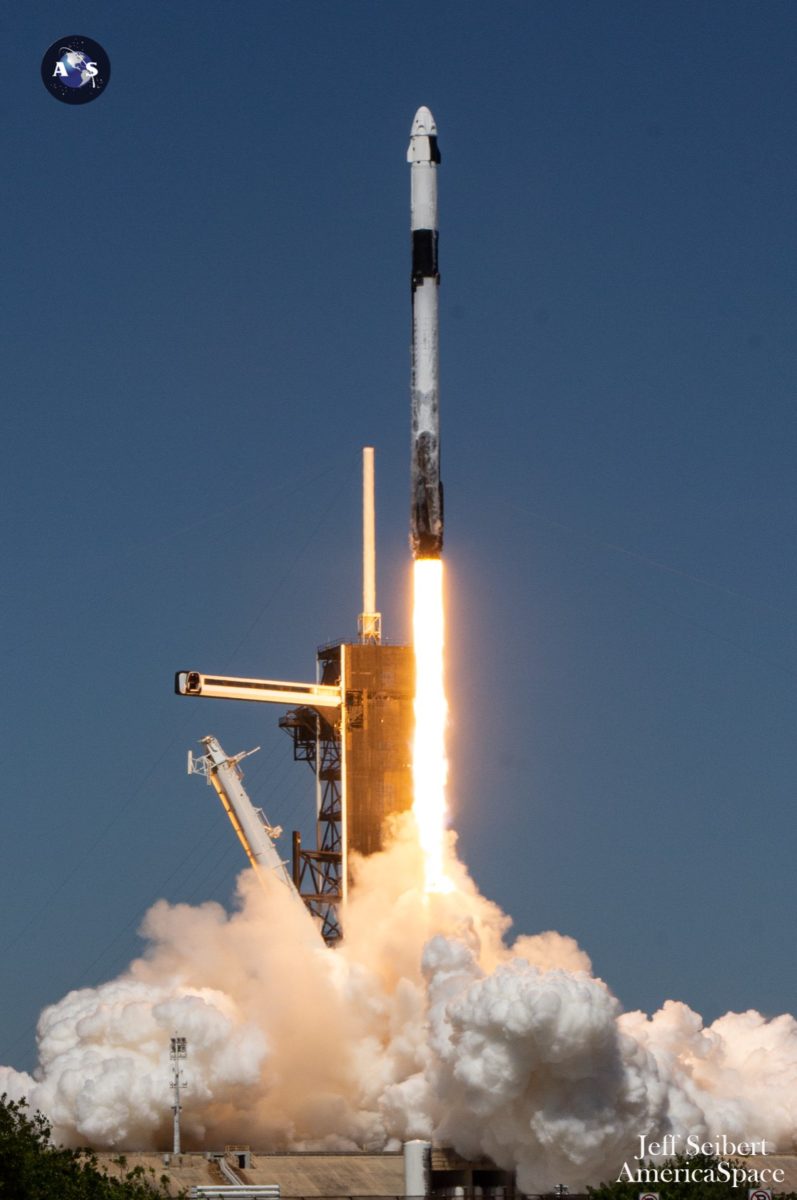
After a couple more delays in early April, Ax-1 went airborne at 11:17 a.m. EDT on the 8th, her five-times-flown Falcon 9 booster delivering Lopez-Alegria, Connor, Stibbe and Pathy smoothly from historic Pad 39A at the Kennedy Space Center (KSC) in Florida towards low-Earth orbit. “Zero-G and we feel fine,” quipped Lopez-Alegria, borrowing a remark from America’s first orbital traveler, John Glenn.
“We were hooting and hollering a little bit on the way up,” admitted Connor in the crew’s first in-flight update early Saturday. He noted that Endeavour presented a “a bit of a tight quarters” and the peculiar microgravity environment “takes a little bit of getting used to”. He also referred to an ill-fated attempt to try a muffin for breakfast. Without elaboration, Connor admitted: “That did not turn out as expected.”
The crew also broke out their zero-G indicator: a soft plush toy called Caramel the Dog. Pathy’s work on the ISS would include several projects associated with Montreal Children’s Hospital, for which Caramel is the hospital foundation’s mascot.
Caramel followed in the fluffy paw-steps of the glittery dinosaur Tremor, who flew aboard Demo-2 in May-August 2020, and GuinGuin, the flying penguin, who accompanied Endeavour’s Crew-2 mission in April-November of last year. And Caramel did not prove shy in making his premiere appearance, floating comically around Endeavour’s cabin. He was tucked away next to Stibbe for launch and according to Pathy the dog had to be “kept on a leash, as he likes to take walks”.
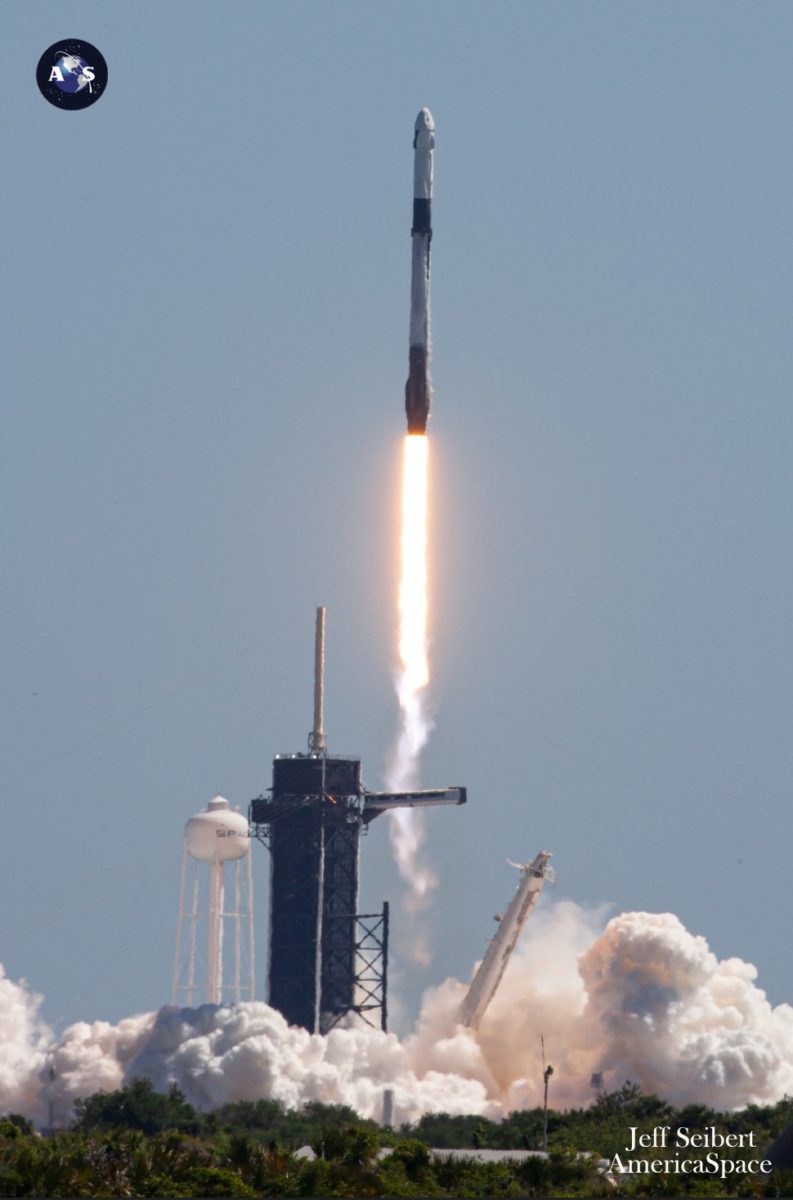
Twenty-one hours and 15 orbits after launch, following a 45-minute delay caused by an issue with a centerline camera, Endeavour docked autonomously at the space-facing (or “zenith”) port of the station’s Harmony node. Docking came at 8:29 a.m. EDT on 9 April, as Endeavour and the ISS flew 260 miles (420 kilometers) over the Atlantic Ocean.
It was the first time that a crew-carrying vehicle had arrived at the ISS and docked here, all the other Crew Dragons having done so at the forward-facing port. (The forward port has been occupied since last November by Dragon Endurance, the ship belonging to the incumbent Crew-3 astronauts.)
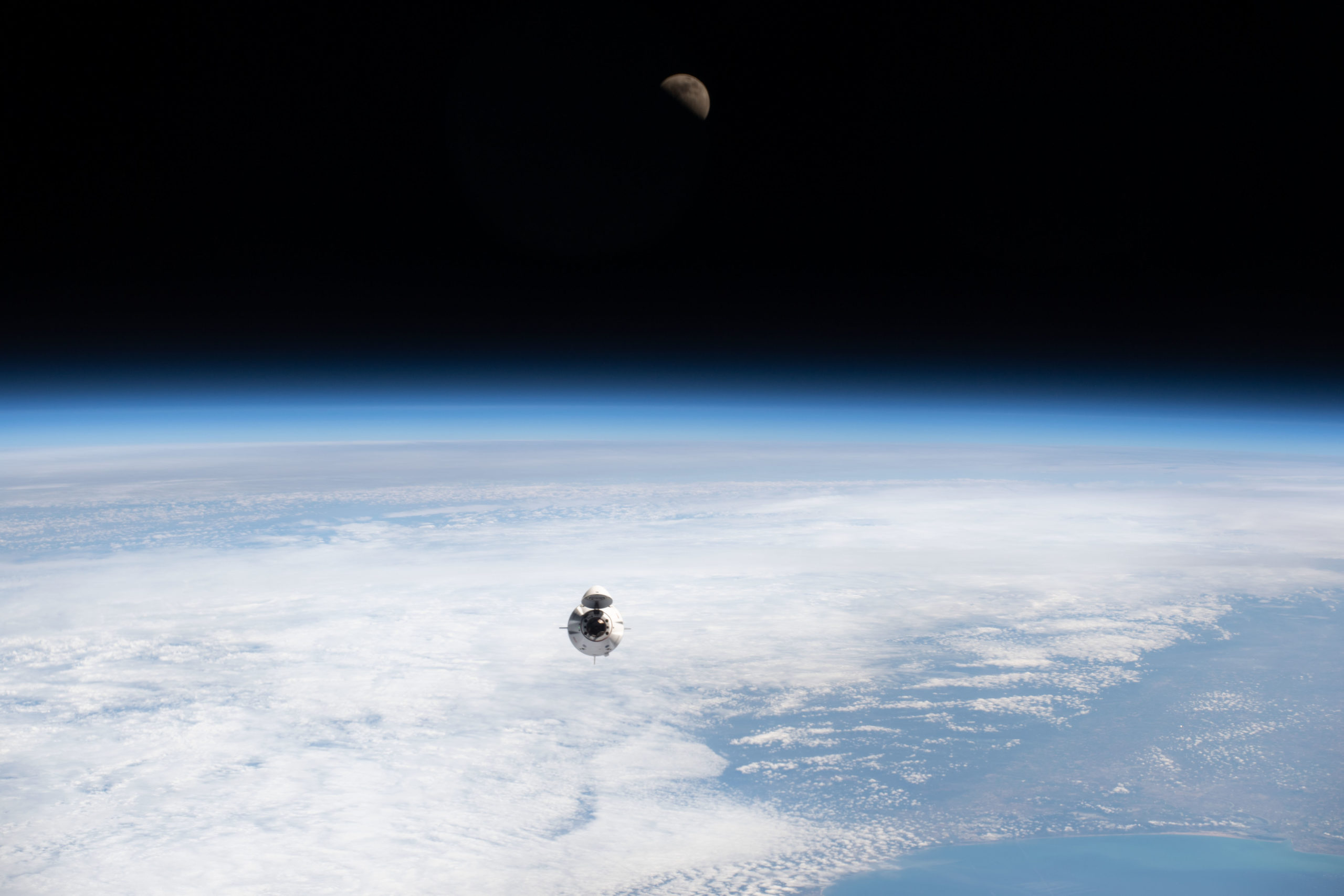
And after conducting pressurization and leak checks, hatches were opened and the Ax-1 quartet were welcomed aboard by the incumbent Expedition 67 crew: Commander Tom Marshburn of NASA, his U.S. crewmates Raja Chari and Kayla Barron, Germany’s Matthias Maurer and Russian cosmonauts Oleg Artemyev, Denis Matveev and Sergei Korsakov. For only the second time in under a year, the station would temporarily play host to as many as 11 human visitors.
“The Dragon ride…looks like it sat with you well,” remarked AxiomSpace CEO and former ISS Program Manager Mike Suffredini, shortly after the crew ingressed the station. Four elated thumbs-up signals came in reply. Old-hand Lopez-Alegria—who was making his fifth flight into space—noted that each of his crewmates’ initial reactions was “expletive deleted” as they cast their eyes out of Endeavour’s window after orbital insertion. Aboard the ISS, he fixed three spaceflight pins to Connor, Stibbe and Pathy, specially commissioned as a “universal astronaut insignia” by the 38-nation Association for Space Explorers (ASE).
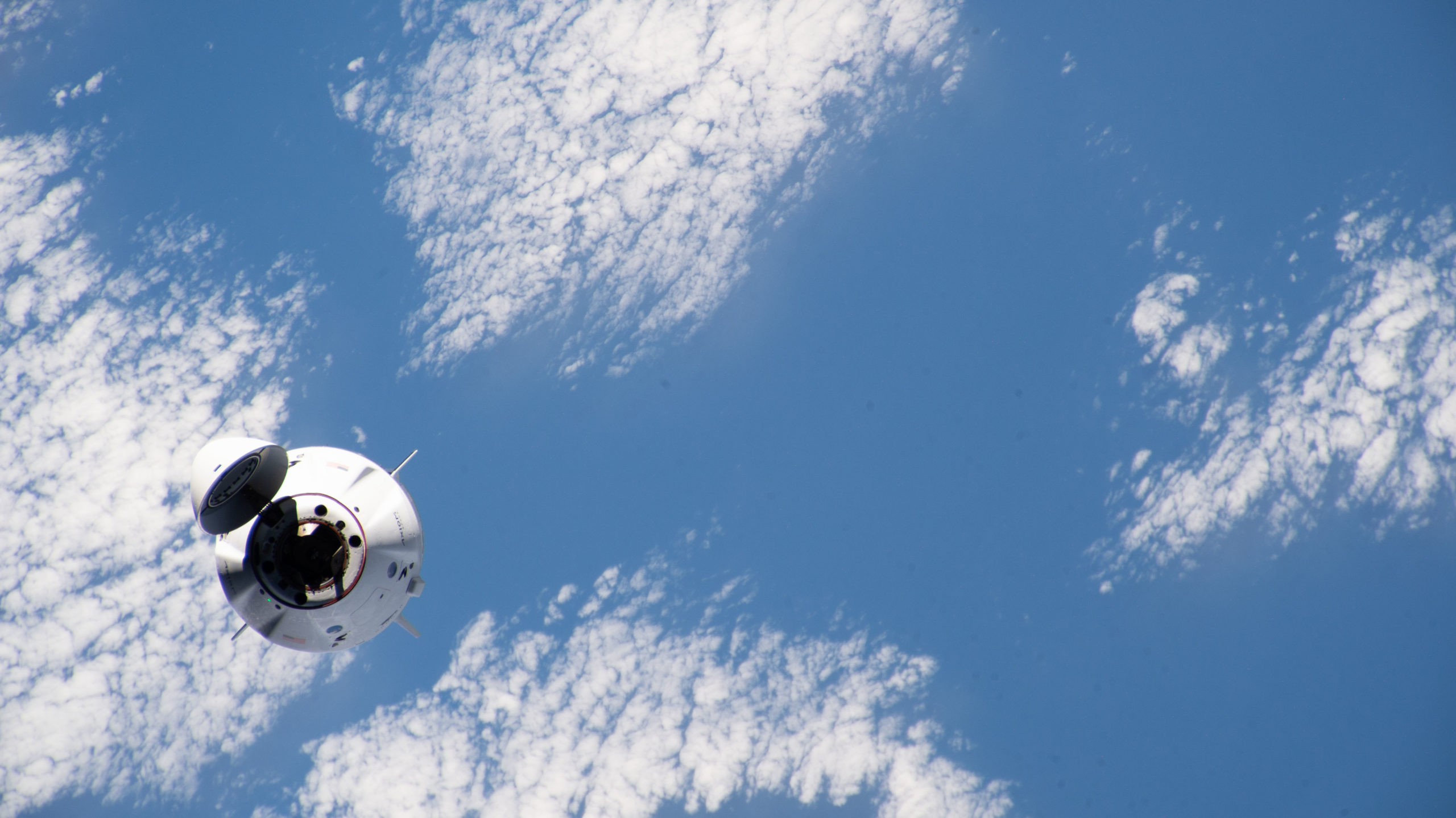
“There’s a tradition, when you pass a certain boundary, you become an astronaut,” Lopez-Alegria said. “That happened to these three gentlemen for the first time yesterday. Now I’d like to note it officially. When I pin these on—I think the numbers are 582, 583 and 584 for Larry, Eytan and Mark—I hope they will wear these with the pride they deserve.”
After safety and other briefings, the new arrivals dove directly into more than a week of packed scientific, educational and outreach experiments, for which they had reportedly trained some 750-1,000 hours over the course of the past year. With the cosmonauts sleeping in the Russian Operational Segment (ROS) and the NASA astronauts in Harmony, the Ax-1 team bedded down elsewhere: Connor aboard Endeavour, Stibbe and Pathy in Europe’s Columbus lab and Lopez-Alegria in the Quest airlock; a fitting berth, perhaps, for America’s premier spacewalker.
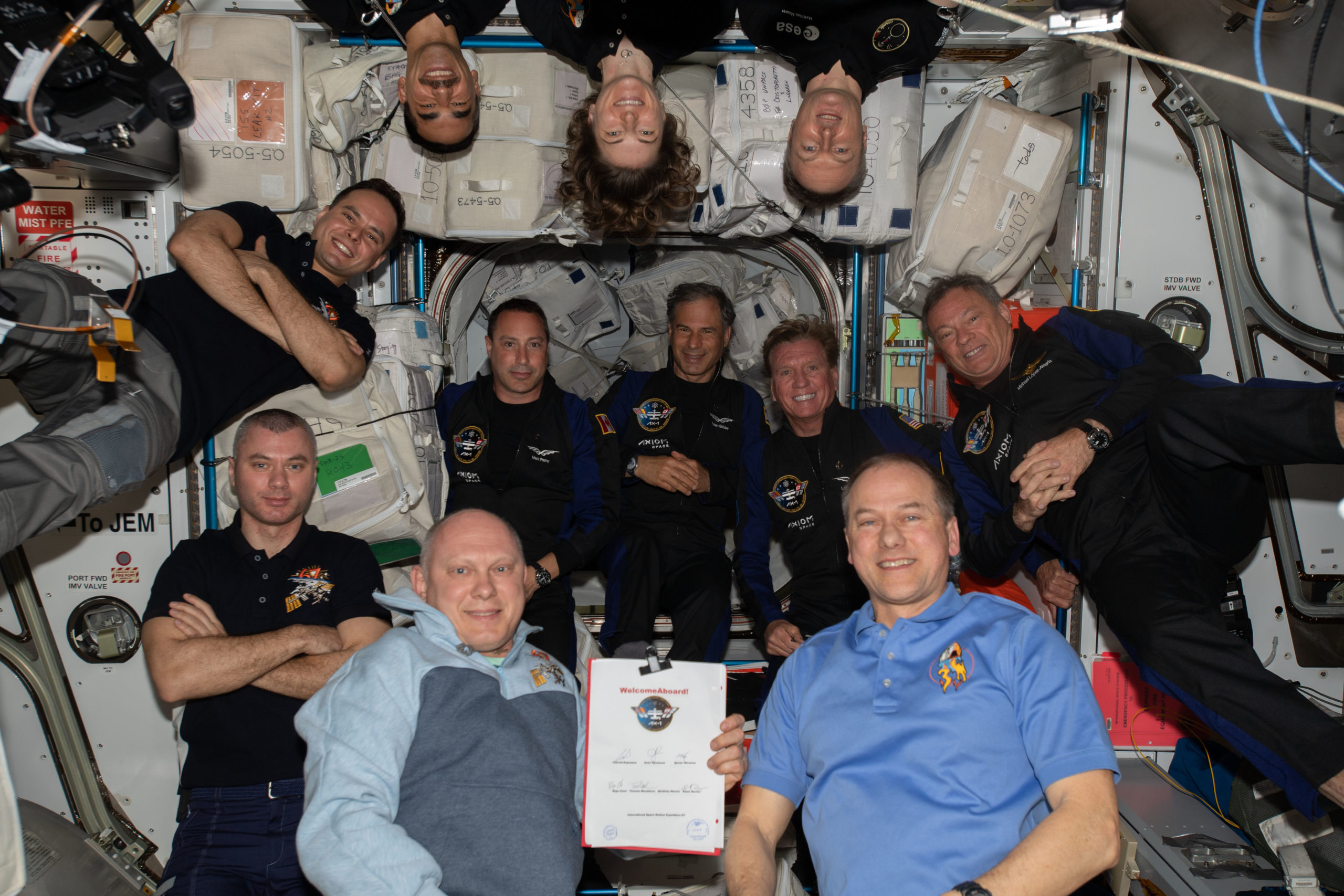
Their initial days in orbit were spent acclimatizing themselves to their new environment and on 10 April Stibbe—who became Israel’s second man in space and the first of his countrymen to board the ISS—spoke to Israeli President Isaac Herzog. The four men then headed into their work schedule, as Connor (who became the oldest human to board the ISS at age 72) tended to a suite of aging and heart-health experiments using the Life Sciences Glovebox (LSG).
These analyzed human cells for genetic markers of cellular aging and explored the adaptation of cardiac-like cells to space. Connor also donned an instrumented helmet built in Israel for a series of cognitive tasks, known as “Neurowellness”.
Elsewhere, Pathy trialed a two-way “holoportation” demo, successfully participating in a “Friends and Family” event on 12 April. The holoportation mixed-reality apps utilizes special lenses to receive two-way, 3D projections as a hologram to communicate remotely between users.
As part of this work, he connected with fellow Canadian astronauts Dave Williams and Josh Kutryk at the Mission Control Center (MCC) at the Johnson Space Center (JSC) in Houston, Texas. As the second Canadian private citizen to board the ISS, Pathy also conducted Earth observations and photography of his homeland—notably the Great Lakes Region—in collaboration with the Royal Canadian Geographical Society (RCGS) and Western University.
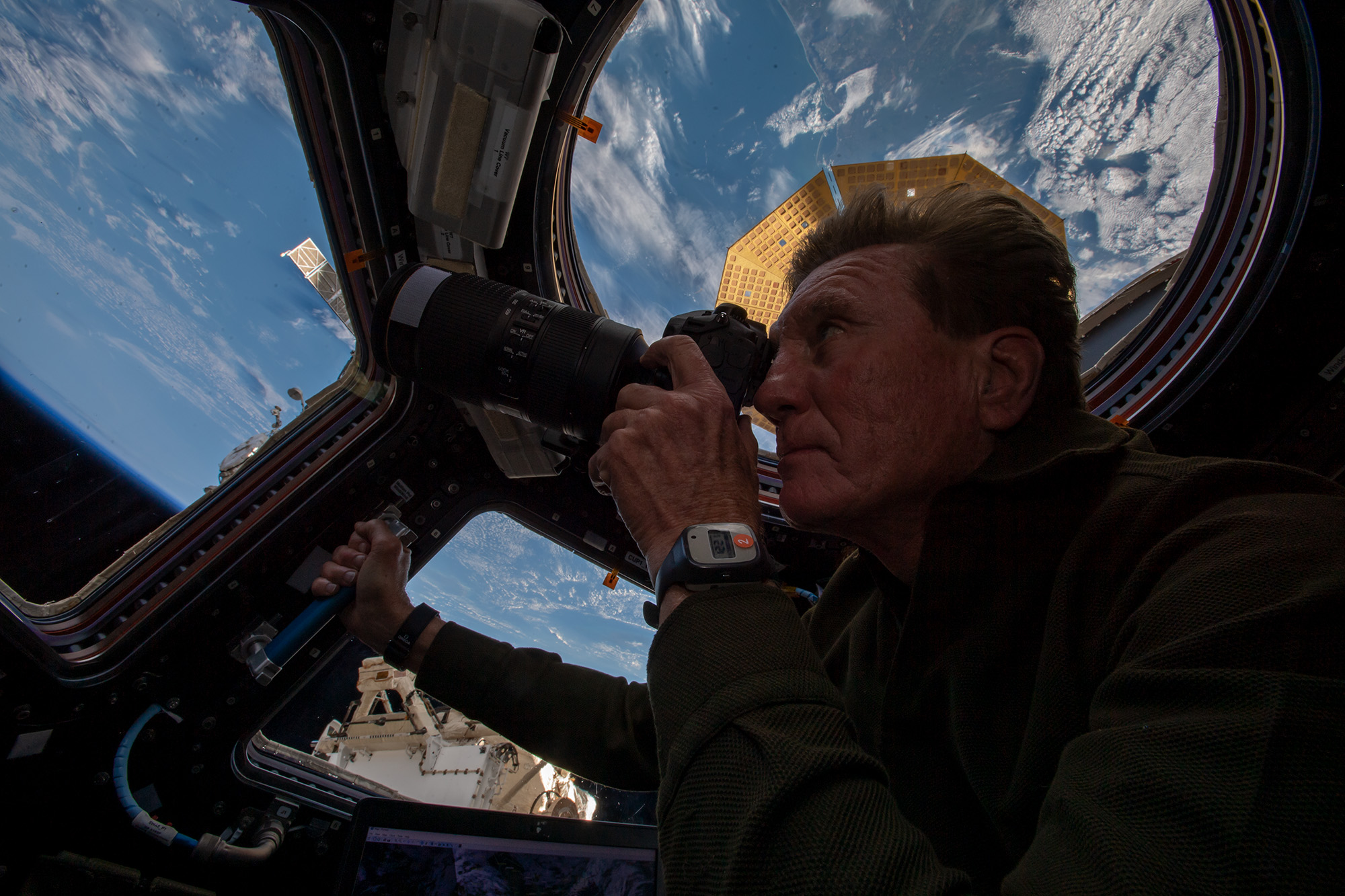
Stibbe’s full plate of research included Fluidic Space Optics to better understand liquid polymer behaviors and the role of microgravity in affecting liquid deployment and solidification into optical lens components. On his first run of the experiment, Stibbe successfully made four small lenses and a single large lens, trialing a technology which may enable the fabrication of future telescopes in space.
Technology and innovation, indeed, were a driving force in much of the Ax-1 research. In addition to the Holoportation and Fluidic Space Optics work, the crew assembled, tested and disassembled the Nano ISS Antenna, a deployable reflector for high-bandwidth communications.
And Lopez-Alegria completed TESSERAE—a mouthful of an acronym which denotes “Tessellated Electromagnetic Space Structures for the Exploration of Reconfigurable, Adaptable Environments”—which seeks to utilize flat-packed tiles to create robotic “swarms” of autonomous, self-assembling units to transition beyond the cylindrical space station modules of yesteryear and “move beyond the 20th-century paradigm…to geodesic dome habitats, to microgravity concert-halls, to space cathedrals”.
There was also a strong outreach and artistic component in support of Ax-1’s Science, Technology, Engineering, the Arts and Mathematics (STEAM) central thrust. Pathy unveiled a winning piece of children’s artwork to provide a message about the importance of preserving Earth for future generations, whilst Lopez-Alegria and the Detroit, Mich.-based neo-classical pianist BLKBOK participated in a piano and keyboard duet. They performed together, after which BLKBOK played a rendition of Sir Elton John’s “Rocket Man” to commemorate the track’s 50th anniversary.
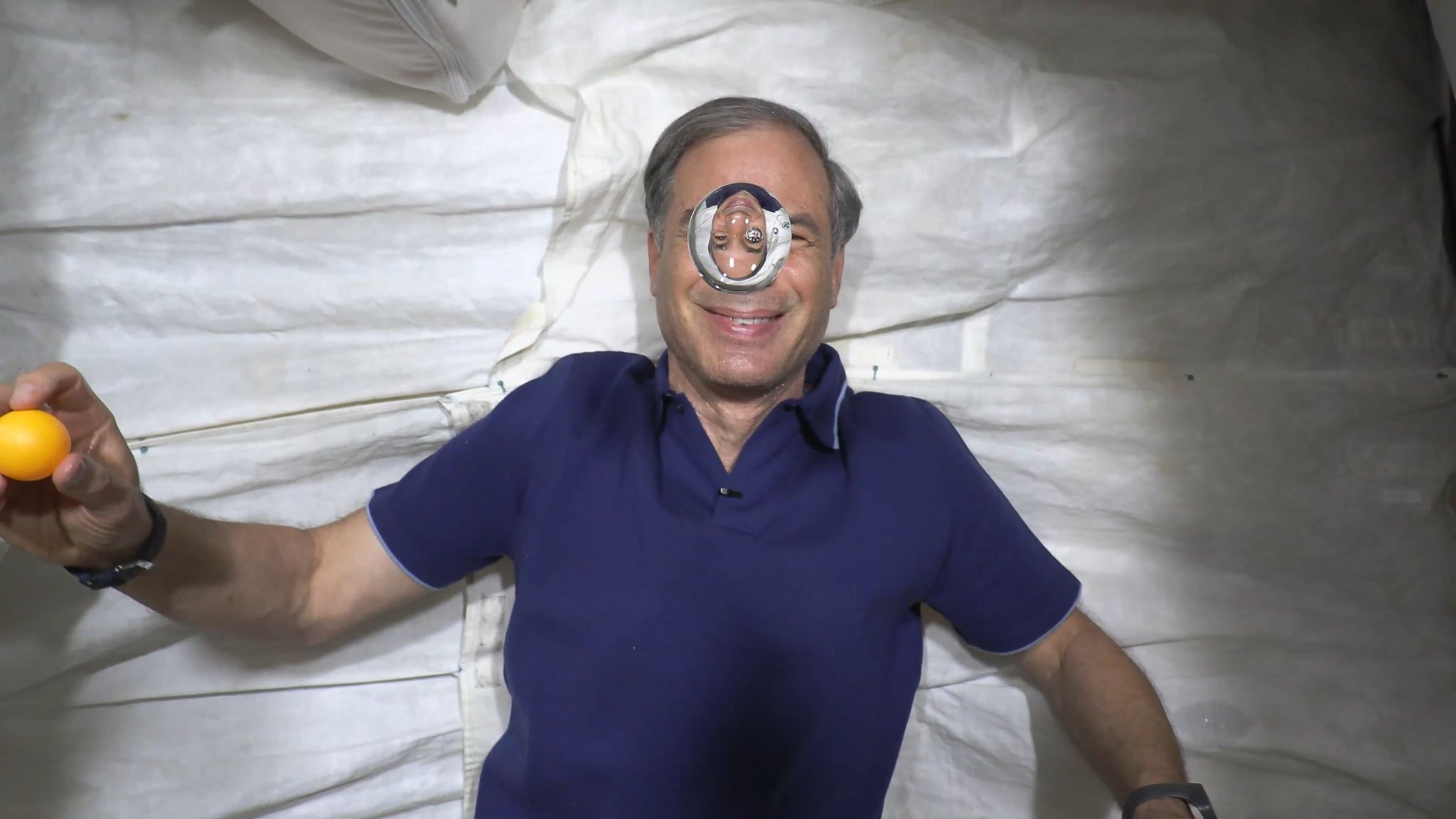
Stibbe and Pathy also qualified as ham radio operators and spoke to young people around the world. In fact, Stibbe’s mission is being conducted under the “Rakia Mission” banner, one of whose goals is to inspire a new generation to achieve exceptional dreams.
But all good things were destined to end. And the ending of Ax-1 came later than intended. Originally targeting an undocking from the ISS early Tuesday, 19 April, for splashdown in the small hours of Wednesday morning, Endeavour’s departure met with delay due to unfavorable weather conditions in the primary landing zone. On Monday, NASA announced a revised undocking time of 10 p.m. EDT Tuesday and splashdown around 3:24 p.m. EDT Wednesday.
Early Tuesday morning, the 11 crew members gathered inside Harmony for a farewell ceremony. “The throughput of science over this past ten days has been amazing,” said Marshburn, before handing the microphone over to Lopez-Alegria. “It’s been an amazing experience,” said Lopez-Alegria. “A few adjectives may be unique, certainly, magnificent, and to some degree, humbling, but I think more than anything, very, very rewarding.”
By his own admission, Lopez-Alegria—whose enthusiasm for participation by non-professional astronauts was ignited following his flight with Iranian-American entrepreneur Anousheh Ansari in September 2006—noted that Ax-1 represented a “first step toward a real democratization of this experience”. He then handed over to his crewmates for their thoughts. Connor described it as “an aggressive schedule” and an opportunity that was both “exhilarating and unique”.
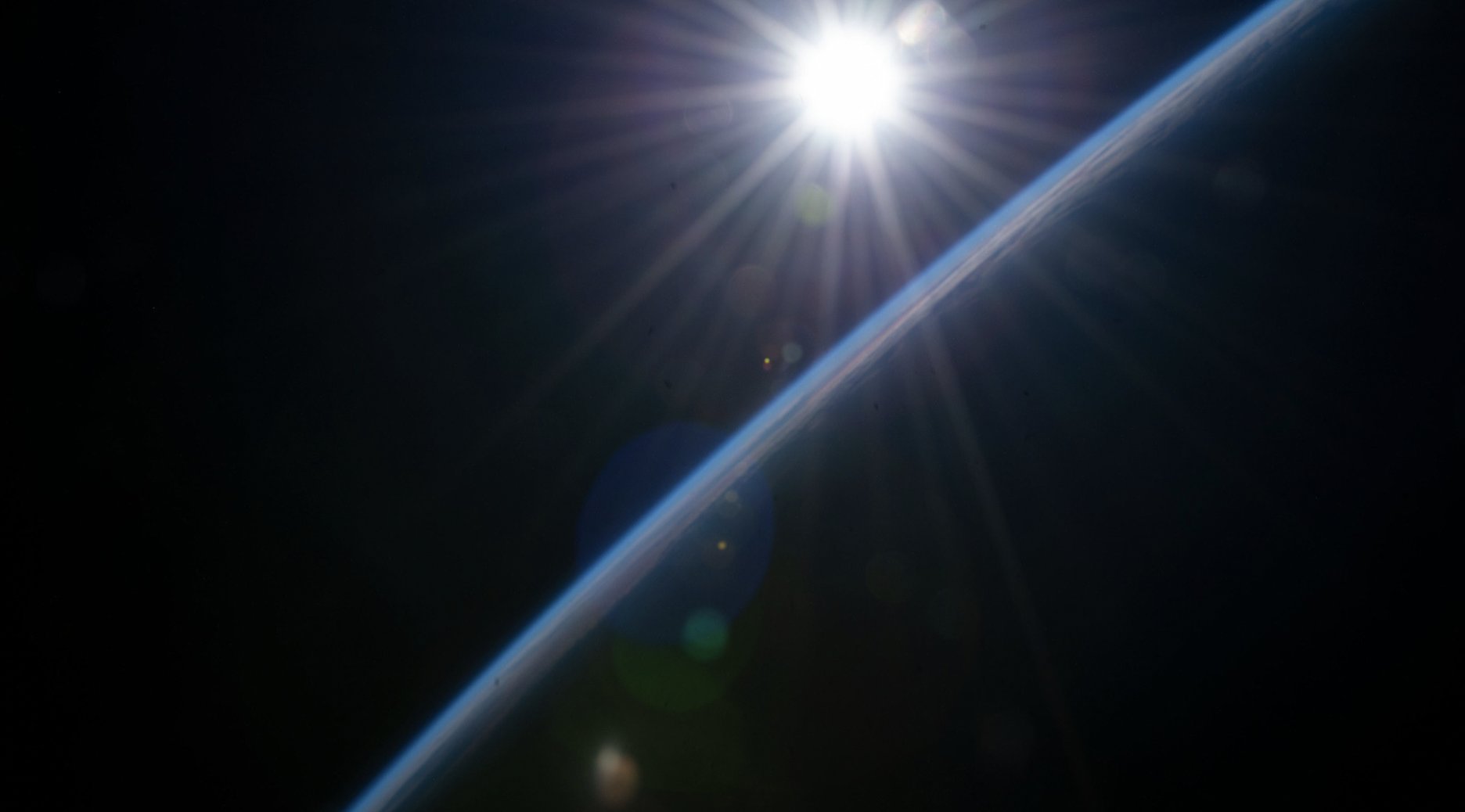
But Tuesday night’s undocking was again called off due to unfavorable weather in the landing zone. At length, a plan was set in motion for Endeavour to undock on Saturday evening and return to an oceanic splashdown early Sunday afternoon. The Ax-1 crew utilized the additional days to conduct re-runs of their experiments and took time to absorb the views of the Home Planet.
Lopez-Alegria, Connor and Stibbe took a few moments to add their signatures to the Neurowellness helmet. But undocking was postponed again to Sunday evening, with splashdown on Monday afternoon, turning Ax-1 into the longest non-expedition crewed mission ever flown to the ISS.
At length, Endeavour undocked at 9:10 p.m. EDT Sunday and autonomously executed four “departure burns” and a single “departure phasing burn” over the next three hours. The spacecraft, laden with 200 pounds (90 kilograms) of cargo and experiment results, then entered a phase of independent flight for the next half-day, until Endeavour’s unpressurized trunk was discarded a little less than an hour before the scheduled splashdown time.
The deorbit burn committed the spacecraft to a fiery re-entry and, for the third time in her career, Endeavour descended beneath four beautiful parachutes to splash down safely in the Atlantic Ocean, off the Florida Coast, near Jacksonville, at 1:06 p.m. EDT Monday. At 17 days, one hour and 50 minutes in duration, it eclipsed shuttle mission STS-126 as the longest non-expedition crewed visit ever undertaken to the ISS.
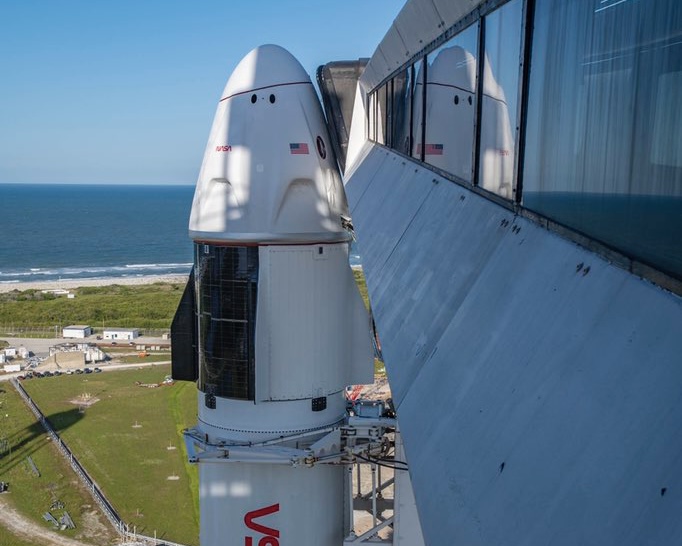
With the Ax-1 crew safely home, attention turns again to KSC, where the three-times-flown B1067 Falcon 9 core stands proud on Pad 39A, ready to lift the brand-new Dragon Freedom and four astronauts to the ISS in the pre-dawn darkness of Wednesday. Aboard Freedom are Commander Kjell Lindgren and Pilot Bob “Farmer” Hines, together with Jessica Watkins and Italy’s Samantha Cristoforetti, destined for a multi-month stay at the station. Their launch has moved a couple days to the right in response to the Ax-1 return delays, weather constraints and ISS orbital mechanics.
An on-time launch at 3:52 a.m. EDT Wednesday, 27 April will establish a new U.S. record of less than two days between the landing and launch of two crew-carrying missions. The current record, set more than a quarter-century ago, elapsed between the return of shuttle Atlantis from STS-71 on 7 July 1995 and the launch of her sister ship Discovery on STS-70 just five days, 22 hours and 46 minutes later on the 13th.




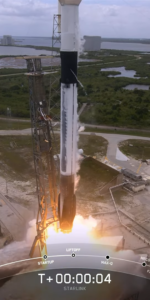
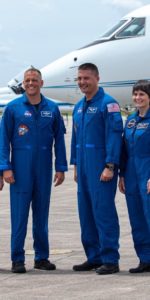
9 Comments
9 Pings & Trackbacks
Pingback:Crew-4 Aims for Pre-Dawn Wednesday Launch to Space Station - AmericaSpace
Pingback:SpaceX Scores Sixth Launch of April, Achieves Turnaround Record - AmericaSpace
Pingback:Crew-3 Returns Home, Wraps Up Six Months on Space Station - AmericaSpace
Pingback:SpaceX Wraps Up Five-Launch June, Delivers SES-22 to Orbit - AmericaSpace
Pingback:SpaceX’s Third Falcon 9 of September Launches at Sixth Attempt - AmericaSpace
Pingback:Soyuz MS-22 Arrives at Space Station, as Crew-5 Enters Quarantine - AmericaSpace
Pingback:Crew-5 Ready for Launch, Six-Month Space Station Mission - AmericaSpace
Pingback:Record-Tying 14x-Flown Falcon 9 Lifts Galaxy 33/34 Twins to Space - AmericaSpace
Pingback:10x-Flown Falcon 9 Launches October’s Fifth Mission, as Starlink Count Passes 3,500 - AmericaSpace